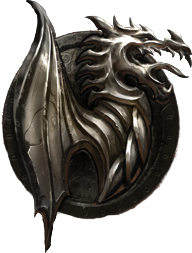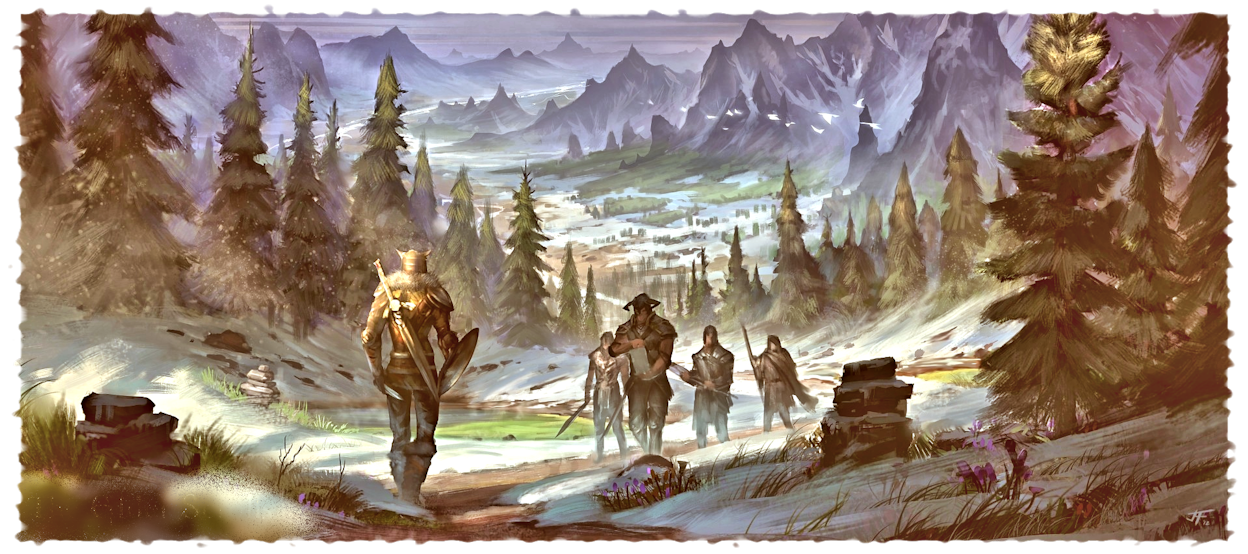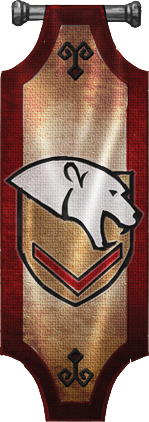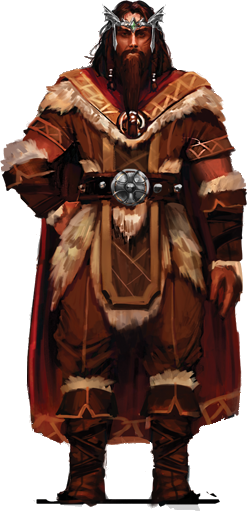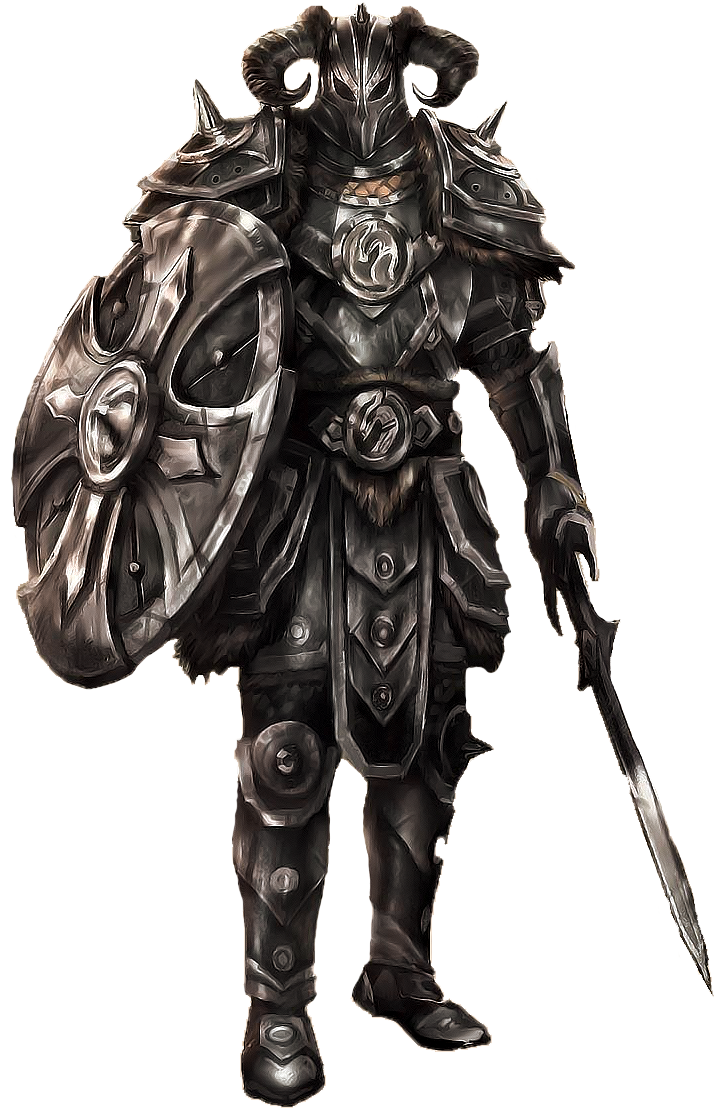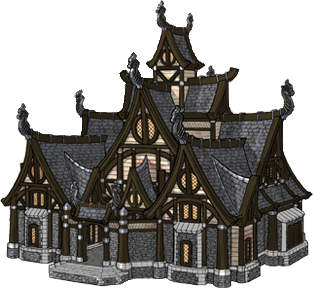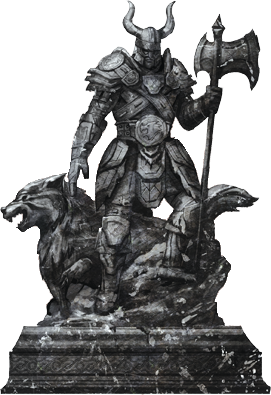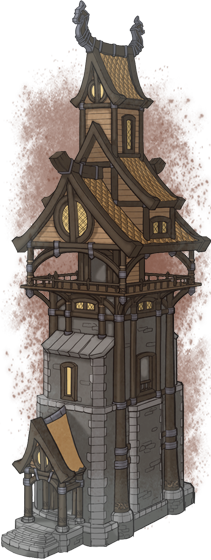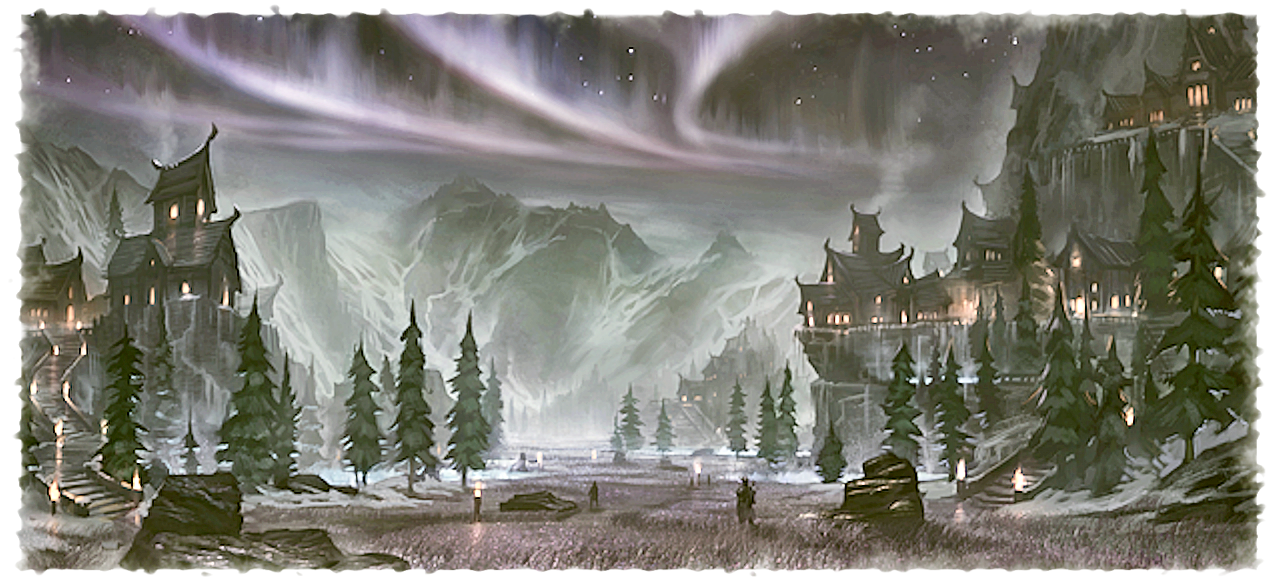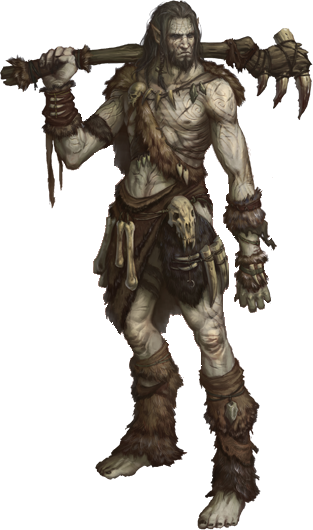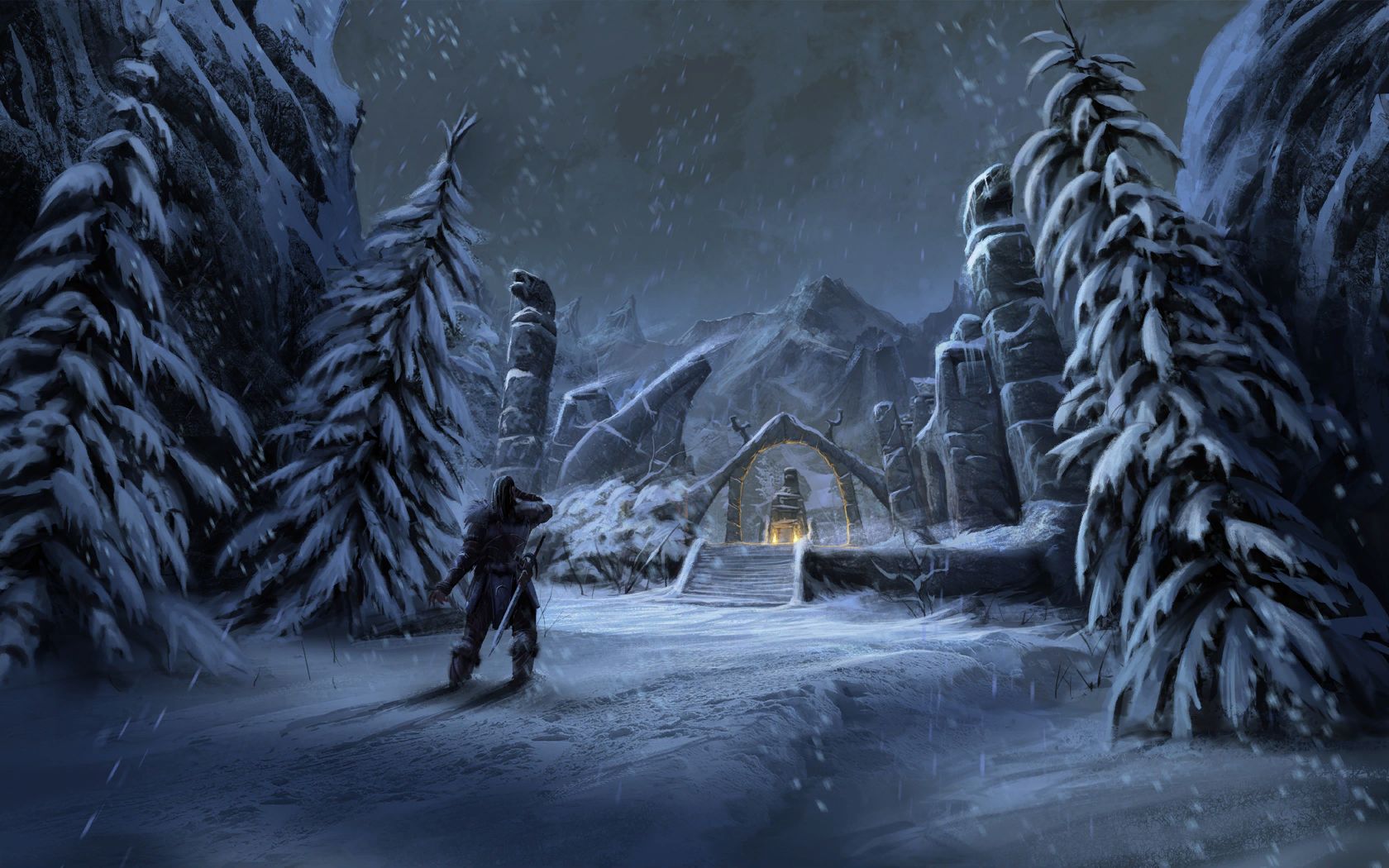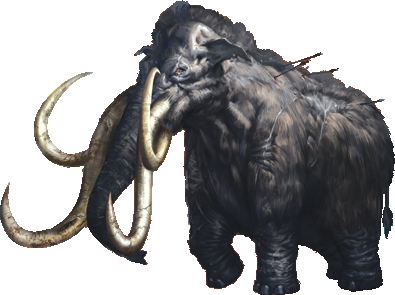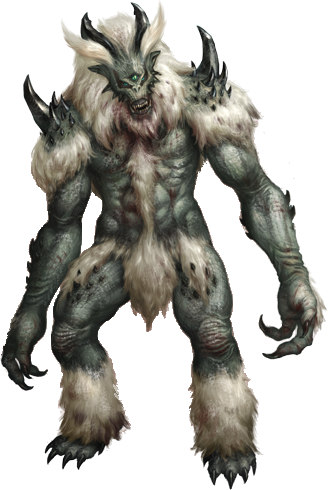The Improved Emperor's Guide to Tamriel/Skyrim
Original media : The Elder Scrolls Online Imperial Edition
By Flaccus Terentius, of the Imperial Geographic Society, 2E 581
Nords of the Ebonheart Pact When my betrothed, Honoria Lucasta, had cautioned me about Skyrim, she wasn't concerned about the Nords. It went without saying that the hulking brutes with the social sophistication -- and hygiene -- of a tamed troll were to be treated with gentle condescension and alcohol. No, her main worry was the unrelenting cold. In fact, she had demanded I pack additional furs for this part of the journey (which were recently looted by the Reachmen). It is little wonder the Nords invade everywhere; they're obviously attempting to flee somewhere -- anywhere -- warmer than here. While the sweeping pine barrens and the ruggedness of the Velothi Mountains are captivating, it is difficult to enjoy these views when your eyeballs have frozen. Did I mention there were Nords here too?
We materialized with a frightening thump across the bridge from the great gates of Windhelm. For all his bluster and hubris, I had expected Vanus Galerion to land us in the city itself. I was puzzled at our trek across the long, icy bridge. The cutting winds that howled off the Sea of Ghosts billowed through my tunic; I required a meal, fine wine, a change of bandages, and some proper sleep -- not the roaring of a constant gale in my face. I had other concerns as well: I must complete this guide and present my evidence to the Chancellor Tharn forthwith. He must learn of the treachery of his nephew Javad and the evil of his advisor Mannimarco. With Vanus Galerion by my side, we were an unstoppable force! With renewed purpose, we advanced into the city (the guards escorted us to the Mages Guild). Galerion abruptly abandoned me as he went off for a private talk with the Hall Magister, vanishing without so much as a farewell wave. Typical Altmer behavior.
While Vanus Galerion tended to matters apparently more pressing than mine, I acquired some painting supplies and asked where I could find the local Jarl (or Snowthane, Pine Baron, or whatever bucolic title Nord rulers go by in these parts). It seems King Jorunn rules these parts -- not from the ruined Palace of the Kings (which the invading Akaviri burned and looted) but from Stone-Fist Hall.
Forcing my way through the courtiers in Stone-Fist Hall, I saw a particularly large bard, with lute in hand and a beard you could hide a baliwog in, serenading the court with an old favorite ditty of the Nords, «Ragnar the Red». He was really quite good. Stepping up to him, I interrupted his song: «Jester! While we wait for the Skald-King, have you any Imperial songs?» The room fell silent. A wizened and uncouth merchant manhandled me by the cloak, dragging me to my knees. «Has Sheogorath taken your mind, stranger? Jorunn Skald-King is no mere buffoon!» «Dear Mara... My humble apologies, Your Majesty!» I held up my hands, realizing my terrible error and feeling my face turn as red as a chokeberry. «No disrespect was intended.» Jorunn erupted into laughter. «Eggvard, leave him be! But seriously, Imperial.» His eyes narrowed. «You have insulted me. A price must be paid. Jester! Make me a limerick about Eggvard here.» I gulped, thought for a moment, then nervously recited the following: A trader named Eggvard the Old, To my surprise, I wasn't run out of town: the hall echoed with roars of approval. I don't think I've ever endured so many bear hugs.
The pressing matters of the day seemed to be consuming meat and slapping thighs in time to some particularly bawdy rhymes. Resting between verses of «Nera the Naughty Nymph», Jorunn signaled me over the his throne. Standing to one side was a striking Nord woman, clean shaven with weather-beaten skin and deep blue eyes. «Flaccus Terentius of Bravil, meet Mera Stormcloak, Lawthane of Windhelm». She offered a smile. «You seem a little out of your element, friend I grinned back.» «No matter. Why not walk with me? Jorunn needs a head count of the local troops.» When I hesitated, she said, «Don't worry, there will be plenty of mead.» Moments later, she'd donned a thick pelt cloak, and we were walking the streets of snow-filled Windhelm. Ahead of the bustling markets and rowdy shouts from the townsfolk was an imposing military structure. Mera opened the door, and I counted seven Nords, who quickly stood from their table to bow at her. She drew two mugs of brew from a barrel and handed me one. «The Fighters Guild aren't part of the local peacekeepers,» she said, downing the drink, then removing a ledger from her satchel, «but the king wants an accounting of them anyway.» The mead was dense, exceptionally rich, and lit a fire in my belly the moment I followed Mera's lead and tried to down the mug. There were traces of fermented berry and a great dollop of honey. I instantly felt more clumsy. I remember leaving the Fighters Guild with Mera and have a vague recollection of entering the Windhelm Barracks. I sketched the building but am not sure when this occurred. I saw the Third Eastmarch Skirmish Company, who invited us in for a drink. Mera was leading the cheers in time to the pounding of a Nord smith repairing some armor.
I couldn't tell you exactly what happened for the remainder of the day. We somehow escaped the clamor of the barracks. I'd had two more mugs of mead and felt bilious. At the expense of my dexterity, I'd worked out the berry taste was juniper. Mera helped me outside. Stendarr's beard, I was acting the fool. I remember being most put out by the disgraceful amount of dirty snow in the streets. I trod in some. That boot will have to be burned. I was placed by a Nord statue, which somehow struck me as hilarious. Crude and vigorous, like my hosts. More mead. No idea when I drew these.
I woke, shaking. Not from the cold, as I'd somehow found my way back to the barracks, but from a foul and fetid dream. Sweat had soaked the bedding, and my brand was burning. I remembered being hounded along the nighttime pathways of Windhelm, a pack of baying Daedra nipping at my heels. They were led by Mannimarco, who seemed to walk without footfalls. It was the mead giving me nightmares. Yes, that must be it. My head felt like it had been partially cleaved in two. I took some deep breaths, wrapped myself up in my moist attire, and stepped out into a blizzard. I needed and apothecarist to sell me potions to cure my head of my ails. As the abated slightly, I recognized many of the structures from my dream. I felt compelled to sketch them here, in case they meant something.
I'd have had better luck finding a hairless Khajiit than a potion merchant in this maze of filthy snow-laden avenues and thick granite walls. With good fortune, Mother Mara had tended to my splitting headache, and I remembered Mera Stormcloak telling me I was actually a guest at the Cold-Moon Inn. I made my way there and found her sitting by a long hearth with my belongings. What a relief! She waved me over with a smile and introduced me to Garthar Three-Fingers, the cook. I was offered various indeterminable lumps of pig, along with bread and six eggs, all fried in a large pan of goose fat. As I stifled my bile from rising, Mera looked offended, so I agreed to tackle this unplanned feast. It duly arrived on a piled plate requiring two hands to lift. Aside from some heart palpitations afterward (which Mera explained were quite normal), the meal was rudimentary but absolutely delicious. I declined her offer of another mug of mead. Mera laughed and said, «If you really want to drink, you must meet my battle brother Holgunn One-Eye.»
The whistling winds and thick pelting snow showed no signs of letting up as we slogged our way to the thick oak door of the Sober Nord Inn, the ironically named tavern where alcohol flowed only slightly more freely than the other locations I'd visited. A blast of heat from the hearth and the warm Nord bodies struck us as we entered. Mera was received with a cheer. Holgunn -- as large and burly as any Nord I'd seen -- stood up to greet us and enveloped me in a hug that almost crushed my windpipe. He was armed with a giant hammer, various daggers, and a hand axe, and he wore thick steel armor, even in town. «We drink to honor the dead, Imperial!» Holgunn's voice boomed through my skull. «I'll try a weak ale, please,» I answered. Holgunn's left eye twitched noticeably. «Ha! It'd mead you'll have in these parts, you milk-drinker!» I resigned myself to another night's festivities and watched Holgunn gulping down brew as if it were ice water, and apparently to the same effect. He told stories of his actions during the recent Akaviri invasion: trekking with the Pack of Bards to a pitched battle within the walls of Windhelm, conquering the Seven Thousand Steps to reach the Greybeards of High Hrothgar, expelling the Akaviri despoilers from Riften, and fighting in the great battle at Stonefalls where the inland seas turned red with Akaviri blood. I meticulously wrote this history down, from Holgunn saving Skald-King Jorunn from an enemy's arrow to his epic account of fighting alongside Wulfharth, the mythical Ash-King, and his diplomacy with the Dunmeri leaders (which included a drinking competition with General Tanval Indoril that lasted almost a week). I corroborated it all with Mera Stormcloak and then mislaid my secondary parchments as the merry throng turned into rowdy debauchery.
I emerged from my room the next morning in Holgunn's guest quarters with an empty bladder and a full chamber pot. «Ready for the hunt, my friend?» Holgunn asked with a wink. «Kyne offers us calm weather, and Ingjard has already seen sabre cat tracks. We run within the hour.» As I chewed on fresh meat and herbs, Mera introduced me to Thorbjolf the Red and Ingjard Stone-Hand, two ferocious-looking Windhelm firebrands who completed our hunting party. «What hunting party?» I inquired. «The one you insisted we organize. We agreed to make matters more interesting, as you demanded.» «More interesting?» I had a void where these memories should have been. «Yes! We hunt with bows, short swords and knives. No long weapons. We agreed to your challenge!» While the foursome affixed their satchels and strung their bows, I sank down in my seat a little. Mead had once more possessed my brain and clouded my judgment.
What I initially pictured as a terrible prospect -- traveling into the Skyrim wilds with four unruly idiots -- was actually rather exhilarating. My more unpleasant preconceptions of the Nords were without merit: If course they were loud and boorish. Yes, their streets were streaked with yellow and brown snow. But they exhibited a strength of character and friendliness to my presence that I have rarely encountered. Holgunn persuaded me to abandon my Imperial clothing. To my surprise, the bear-skin overshirt, leather breeches and snow-wolf boots were both pliable and well fitting. Once I got used to the smell, the fur cloak was both comfortable and cozy. With my hunting attire sealing in the warmth, we left Windhelm for the snowy hills of Eastmarch. Up by the tree line, close to a high cave, Ingjard quickly crouched down, drew her bow, and fired before I'd even seen the beast she targeted. I stayed behind her with my own arrow at the ready as the three other Nords spread out. Mera charged and plunged a dagger into the neck of the cat, wrestling it as blood spurted onto the snow. It soon died, and I sketched its carcass for posterity.
This was a violent interruption to a long hike and stories around the fire. Ingjard had lost part of her right hand fighting a werebear, but her wound hadn't diminished her painting ability. Mounted on this page is a piece she gladly gave me. It shows the valley leading to High Hrothgar, although Holgunn informed me the buildings were positioned in a most fanciful fashion. No matter; the depiction of the aurora, or «Kyne's lights», is both accurate and exquisite. As I rested below the glow of greens and purples, I felt at peace in Tamriel's grand wilderness for the first time. By the evening of the second day, we were well above the tree line, in the windswept crags of the Velothi Mountains. After erecting our spacious tents, with pitched and oiled roofs that allowed the snow to slide right off, I inspected the kills -- two snow foxes, a wolf, and a bear. I then sat by the roaring fire, sipping my mead and secretly spilling some behind my log seat; just to keep the pretense up that I was matching others' consumption. Holgunn told us a gripping story of a ghostly giant who haunts these mountains. Returning to this world after a pact with Hircine, he clambers the hills and valleys in fretful search for his lost giant wife. Woe betide those who cross his path; the forlorn spirit possesses an icy ghost club with which he freezes Nords solid before devouring their immobile bodies. Retiring to my blankets, I felt a chill wind whistle through the tent, and shivered as if something were wrapping its vague form around my soul.
Our third day of the hunt was fruitful. We descended into the high forests, Nord horns blowing after bagging a lunch of rabbit meat and a dinner of wild mushrooms and venison. As Thorbjolf fried up the meat, Mera Stormcloak entertained us with a tale of an ancient Snow Elf wizard named Serenarth. As I sketched, she spoke of an encounter the Elf had had with Ysgramor's companions during the Night of Tears, as both sides fought with fury over the razing of Saarthal, the first Nord settlement. Ysgramor's bow aim was swift and accurate; he felled the mage with an arrow from his bow, Long-Launcher. As the Nords pressed on to reclaim their city, Serenarth lay cold and dying. With his last strength, he summoned a mighty frost atronach, and through a bargain with unknown but malevolent forces, he traded the Daedra's spirit with his own. To this day, Serenarth's host form waits, encased in ice within a glacier close to where his frozen corpse still lies, destined to thaw out and seek vengeance on Ysgramor's heirs.
Ingjard spotted movement between the flurries where I saw only walls of snow. Scrambling up high into the mountains, I finally spied and old female sabre cat hunting rabbits. Too far for our bows, we pursued our quarry up into low clouds and between rocks of various slipperiness. We finally halted at a set of ruins draped across an upper escarpment: a great monument to resting bones. I inquired about this strange place. «This is Skuldafn,» Mera replied. Thorbjolf watched the cat disappear into the ruins. The Nord returned without crossing the threshold; the snow-covered arches seemed to forbid his advancing, while stone totems to ancient animals stared back at us with silent malevolence. It was a most eerie sight. Holgunn beckoned our party back and away from the place. All he said was, «Don't enter the Dragon Temple.» I continued to pry reasoning from him until Mera grabbed me by the shoulder. «Do not pester Holgunn about this,» she whispered. «These Dragon Priests stood at the right hand of Alduin.»
My weather-beaten face finally warmed up as we took our first steps into an eerie terrain of burbling hot springs and steaming fumaroles. I ventured down to a collection of vast green ponds, almost luminescent in color. In the mid-distance, Mera saw a large figure plodding through the sparse landscape, and the party set off to meet the giant. I dipped my toes in the roasting water of the hot springs and felt a shiver of warmth. This joy was lessened somewhat by the smell. I first thought Thorbjolf was cooking eggs, but this was a strange gas that left a bitter taste in my throat. The steam grew thicker as it mingled with fog rolling down into the plains, and I lost sight of my friends. I tried without luck to find the hunting party before nightfall. The best I could manage was hearing their horns, echoing faintly in the distance.
Lost! I scrambled up a scree of loose rubble, the horns and mists both fading as I navigated back to more frigid temperatures. I found myself wandering into wood of fir and pine. Picking my way through the trees, I suddenly heard wild grunting and was thrown to the ground. An ugly thing blinked thrice. It snarled, revealed rows of pointed teeth, and prepared to pounce when three armored shapes flew past me and tore into it. «Eat my horse, would you?» the beefiest of the three yelled as his two-headed axe cut deeply into the troll's arm. The appendage dangled grotesquely from its remaining muscle before the beast was dispatched, its body staggered by arrows driven into it by a second warrior.
The broad-shouldered Nord with the axe smiled. «Well met, stranger. I am Vigrod Wraithbone the Harbinger. These are my Shield Brothers Uli and Rargal. We are of the Companions.» Making camp in the rough, Vigrod explained that his Companions traveled with little equipment to slow them down, spending their nights in caves and dells instead of under tents. Sitting around the fire, Uli and Rargal were guarded, focusing on the care of their weapons, but Vigrod was more sociable and spoke of his friendly rivalry with Holgunn One-Eye. I asked of his loyalty to the Skald-King, and he proudly told me of swearing fealty to this throne, in spite of his clan's tradition as mercenary sellswords. The next morning Vigrod agreed to take me with them as they hiked south, to their home at Fallowstone Hall in the Rift hold. As the alternative was to become troll fodder, I agreed. We marched past more hot springs, and as my boots became thoroughly worn in, I watched the snows slowly recede, and as we topped a pass, a broad deciduous woodland spread below us.
I was made most welcome at Fallowstone Hall. For a start, I was able to refuse the offer of mead without offending my hosts. I was surprised to see other races -- even a Khajiit -- among the warriors within. As for the structure itself? It was a building so secure its foundations seemed to sprout from the foothills of the Velothi Mountains. The timber and woodwork were of surprising quality, with firm trestles and good use of fir and pine. My only gripe was the abundance of carved dragons affixed to every gable end; such carvings border on idolatry. During the evening's drinking, I felt uneasy. Vigrod was not the cause; his stories and legends of the Companions would fill three volumes of yore, although I was instructed not to transcribe them (many were from the time of Ysgramor, and the use of his fabled axe Wuuthrad, which is apparently kept in one of the many vaults under this hall). No, I suspected forces more fiendish were at work, so I excused myself for the night, took to the guest quarters, and prayed for a restful interlude. Mara did not listen. Despite a bedding of dry, recently washed skins and rough linen, my night terrors returned. And grew worse: Mannimarco pursues me. He takes the form a ghost giant, glowing blue in the dim glow of Masser. He cracks his club against my head before picking me up and pressing his thumb deep into my throbbing brand. The sooner I flee this north country, the better. The next morning I woke to find myself abandoned at the gates of Riften, with no memory of my flight there. I left for Mournhold aboard a mead caravan both perplexed and unwell.
|
